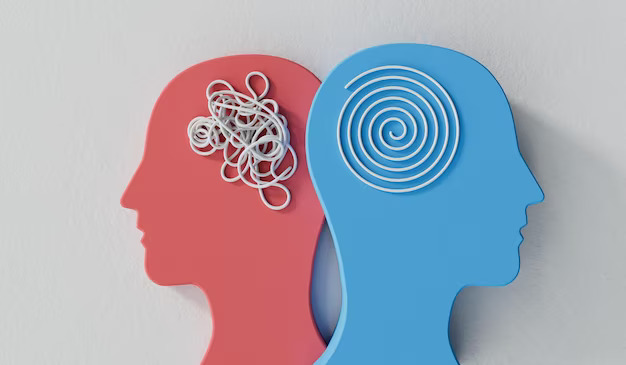Is Cognitive Behavioral Therapy Right for You?
In cognitive-Behavioral therapy (CBT), the link between thoughts, feelings, and behaviours is the main emphasis of the psychotherapy. It is a focused, time-limited strategy that tries to assist people in recognising and altering harmful thought and behaviour patterns that contribute to their issues.
The foundation of CBT is the notion that our thoughts, feelings, and behaviours are intertwined and have an impact on one another. For instance, when we have negative beliefs about ourselves, we could experience sadness or anxiety.
As a result, we might act in ways that only serve to reinforce these bad views, including withdrawing from social situations or isolating ourselves from other people.
By identifying and questioning negative thoughts and beliefs and substituting them with more uplifting and practical ones, cognitive behavioural therapy (CBT) aims to assist people in breaking this pattern.
The Impact of Cognitive-Behavioral Strategies
- Cognitive restructuring: This involves identifying negative thoughts and beliefs and replacing them with more positive and realistic ones. A therapist might help a patient change their negative ideas, such “I am a failure” after making a mistake at work, to something more uplifting, like “Creating mistakes is an ordinary component of learning and developing.”
- Behavioral activation: This involves identifying and engaging in activities that are enjoyable or meaningful to the individual, even if they don’t feel like doing them at first. The mood and motivation may both be enhanced by this.
- Exposure therapy: This involves gradually exposing the individual to situations that trigger anxiety or fear in a controlled and safe environment. This can help them to overcome their fears
History of CBT
Through CBT “online counselling”, you can learn practical techniques and strategies to challenge and modify negative thinking patterns. This therapy approach encourages self-reflection and empowers you to develop healthier coping mechanisms.
Through altering unhelpful thought patterns and behaviors, Cognitive Behavioral Therapy (CBT) is a psychotherapy technique that tries to cure mental health conditions. The development of therapies based on the idea of cognitive restructuring by psychologists like Albert Ellis and Aaron Beck can be credited with giving rise to cognitive behavioral therapy (CBT) in the 1950s and 1960s.
Ellis created Rational Emotive Behavioral Therapy (REBT), which holds that our emotions and behaviours are influenced by our thoughts, beliefs, and attitudes. He argued that people may change their negative ideas and behaviours into positive ones by recognising and questioning their unreasonable beliefs.
Conversely, Beck created cognitive therapy, which focuses on recognising and altering automatic negative beliefs that fuel mental health issues including sadness and anxiety. The therapy places a strong emphasis on resisting unfavourable thoughts and cultivating more rational mental processes.
CBT has changed over time to incorporate a variety of methods and strategies, such as mindfulness-based CBT and Acceptance and Commitment Therapy (ACT). These therapies include mindfulness and acceptance concepts, putting a strong emphasis on the value of being in the present and embracing one’s thoughts and feelings without condemnation.
Many studies have demonstrated the efficacy of CBT in treating a variety of mental health conditions, such as anxiety disorders, depression, and post-traumatic stress disorder. It is a short-term, systematic therapy that usually requires 8 to 20 sessions.
CBT is a common therapy option for many mental health conditions nowadays and is in extensive use. The therapist and client collaborate to discover and change unhelpful thought patterns and behaviours in this empowering and collaborative therapy. CBT is anticipated to keep developing and getting better as this field of study is explored, which will increase its efficacy in treating mental health conditions.
New in CBT
Researchers and practitioners are constantly exploring new techniques and approaches to enhance its effectiveness and reach. Fortunately, in today’s digital age, CBT “online counselor” offers a convenient and effective way to access professional help.
Here are a few examples of new developments in CBT:
- Digital and Telehealth CBT: With the growing use of technology, CBT is increasingly being delivered through digital and telehealth platforms. This allows individuals to access therapy from the comfort of their own homes and can increase the reach of CBT to individuals who may not have access to traditional in-person therapy.
- Third-Wave CBT: Third-Wave CBT refers to newer approaches that build on the principles of traditional CBT but incorporate elements of mindfulness, compassion-focused therapy, and acceptance and commitment therapy (ACT). These approaches aim to help individuals accept and manage their thoughts and emotions, rather than trying to change or eliminate them.
- Transdiagnostic CBT: Transdiagnostic CBT is an approach that focuses on treating common underlying processes that contribute to multiple mental health disorders, rather than targeting specific diagnoses. Anxiety, depression, and eating disorders are just a few of the conditions for which this method has been proven to be useful.
- Brief CBT: Brief CBT refers to shorter therapy sessions that can be completed in as few as one or two sessions. This approach is particularly useful for individuals who may not have the time or resources for traditional longer-term therapy.
- CBT for specific populations: CBT is being adapted and developed for specific populations, such as children and adolescents, individuals with chronic health conditions, and individuals from culturally diverse backgrounds. These adaptations aim to ensure that CBT is accessible and effective for all individuals, regardless of their background or circumstances.
Conclusion
Overall, these new developments in CBT highlight the continued growth and evolution of this therapy, as practitioners and researchers work to improve its effectiveness and accessibility for all individuals.
